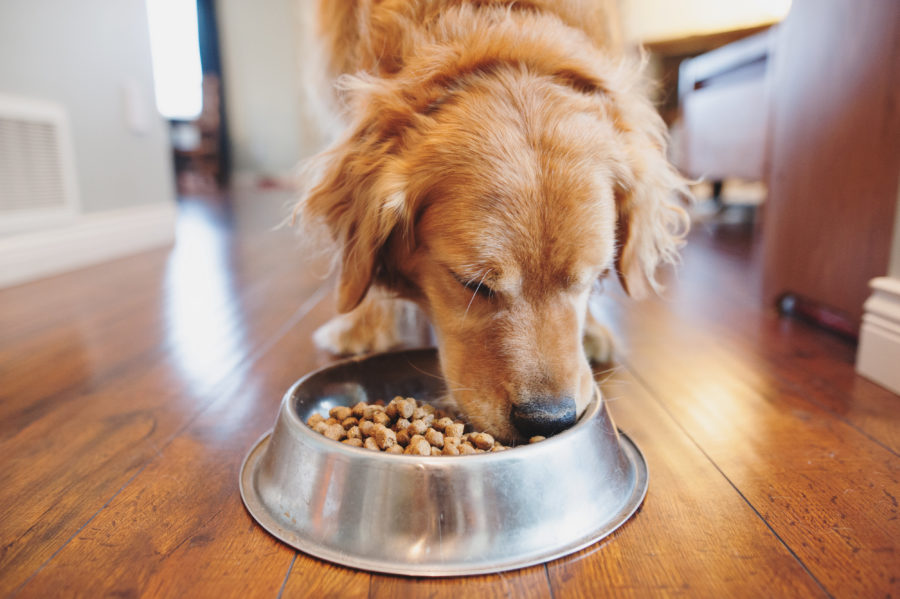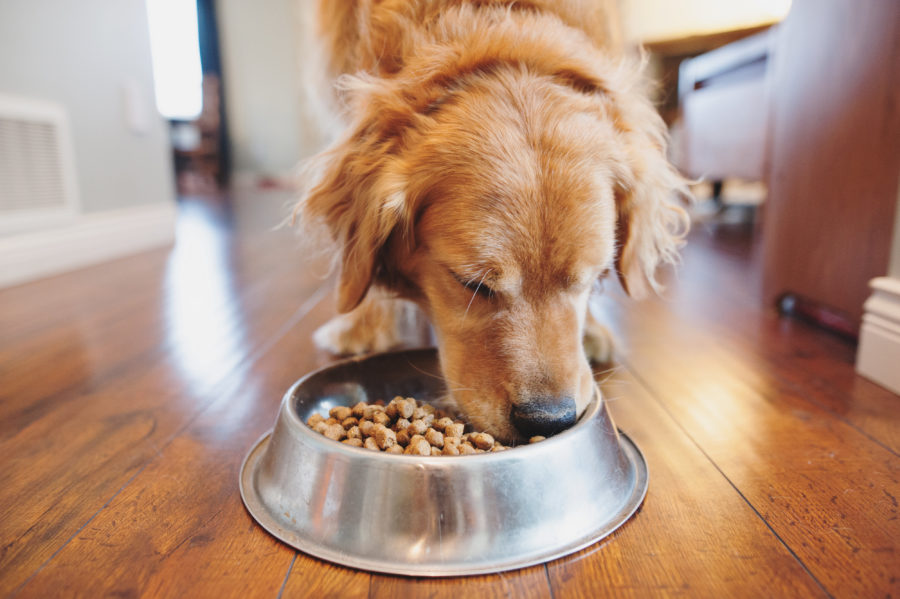Your dog’s protein requirements depend on a variety of factors. Learn how to shut out all the mixed information surrounding vegan pet food and zero in on a balanced diet that’s right for him.
With so many voices advocating one approach or another to feeding your cat or dog, it can be difficult to know which food is right for your pet. How much animal protein does she need? Can she thrive on a vegan diet? The truth is that every cat and dog is different, and there is no one-size-fits-all approach to feeding them.
When choosing a pet food, and thinking about the amount and types of protein in the bag, it’s important to consider things like size, breed, activity level, age, food sensitivities and a variety of other factors. It’s also important to understand that all animal proteins are not equivalent. For example, certain essential amino acids may be higher in one source compared to another. All of the ingredients in the bag need to balance one another to provide optimal nutrition.
That’s why it’s necessary for pet owners to be aware of the diverse range of recipes available, so they can properly address the equally diverse needs of their pets. Instead of trying to find a single food that works for every pet, it’s vital to know that each may require something different – whether that’s a diet that provides high animal protein, moderate protein, vegan protein, limited ingredients, whole-grains or no grains.
Different animals need different diets
There are some dogs and cats that require higher levels of protein in their diets, especially highly active pets. Just like humans do, cats and dogs require this nutrient for tissue and muscle repair. So if your pet is a busy one, a high animal protein recipe such as Petcurean’s GO! SOLUTIONS CARNIVORE™ might be the way to go.
If your dog or cat prefers lazy afternoons on the couch over running and playing, a more moderate protein option might be the best choice. This can support better health over time and also benefit the environment, since unused protein will be stored as fat and the leftover nitrogen, an environmental contaminant, will be excreted in the urine.
It’s also important to recognize that the dietary needs of your pet may change as he gets older. Pet ownership is a lifelong journey, and it is important to monitor how your pet is responding to her food so you can keep her happy and healthy for the rest of her life.
The vegan debate
For some dogs, animal protein isn’t ideal. Many canines have sensitivities to certain animal protein sources and can suffer from adverse reactions that may include itchy skin, sneezing, constant licking and a variety of other symptoms. In these instances, switching to a vegan diet, where the protein comes from plant sources such as grains, peas and lentils, could be the way to go.
It’s a very common belief that dogs are carnivores like cats, but they are actually omnivores. This means that they are able to meet their nutrient requirements from a wide variety of foods, including both animal- and plant-based ingredients. The secret for dogs is that they consume enough protein, containing all the essential amino acids, and complementary ingredients that provide complete and balanced nutrition. It is the essential amino acids found in protein, rather than the protein itself, that is required by dogs. Both essential and non-essential amino acids are available from plant and animal sources in varying levels.
That said, a diet without any animal ingredients is not suitable for certain dogs, such as those under one year. It’s always best to speak with your veterinarian, or an animal nutritionist, to determine whether a plant-based diet could meet your companion’s nutritional needs.
Why does the amount of protein need to vary?
Historically, dog food has been around 22–26% protein, a level which is more than adequate to supply essential amino acids for most dogs. There are a few cases where higher levels are needed, such as for performance animals or critically ill patients. Conversely, decreased levels of protein may be necessary for specific heath issues.
There’s a common misconception that protein is the main source of energy in a pet’s diet. However, carbohydrates and fats are actually better energy sources for pets, allowing protein to play its primary roles in supporting tissue and muscle repair, enzyme and hormone production, and immune function. This is why there must be a balance between carbohydrates, fat, and protein, which helps dogs and cats maintain energy levels, build strong, lean muscles, and produce well-formed stools.
It’s also important to know that not every protein source is created equally, and that some animal sources have higher mineral content that must be balanced with other non-animal sources. This is why the percentage of total protein in each recipe will vary, along with the overall number of sources.
Simply put – there’s no one-size-fits all approach. Just because your neighbor’s pet is thriving on a particular diet doesn’t mean that diet is right for yours, so take the steps to find the food that’ll help her thrive!






